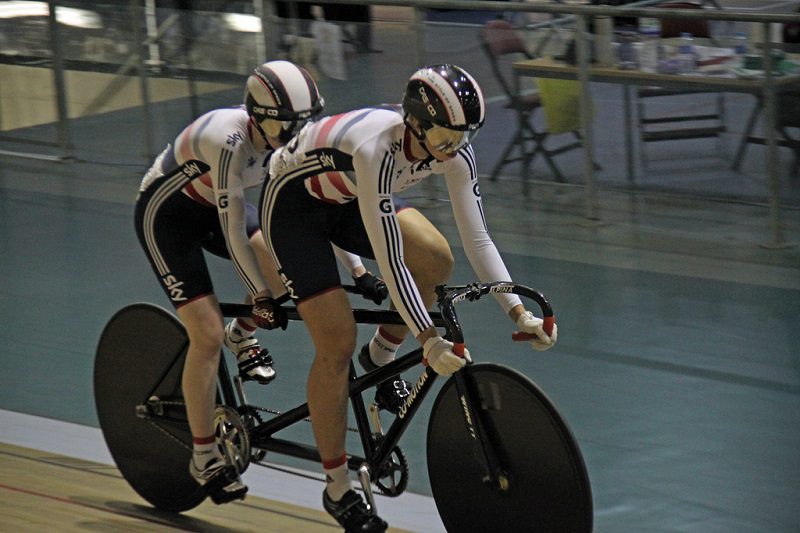Get familiar with UCI paracycling classification terms
If you don't often follow para-cycling, the unique terms used in the sport for designating a rider's classification or a race might be unclear.


If you don’t often follow paracycling, the unique terms used for designating a rider’s classification might be unclear. Events, such as the UCI paracycling world championships, kicking off Tuesday in Nottwil, Switzerland, use terms like H1, T1, C1 and so forth to classify riders and races.
As you tune into the proceedings, it helps to know what those terms mean. Take a look at a breakdown of those definitions, with some clarification regarding their purpose.
The purpose of paracycling classifications
UCI guidelines read, “The purpose of the paracycling classification is to minimize the impact of impairment on the outcome of competition, so that an athlete’s success in competition relies on training, physical fitness and personal athletic talent. Classification is an on-going process whereby all athletes are under regular observation by classifiers to ensure consistency and fairness for all athletes.
“In order to achieve this purpose, athletes are classified according to the extent of activity limitation resulting from their impairment. This places athletes according to how much their impairment affects core determinants of performance in cycling.”
As such, the letter that such a classification begins with denotes the equipment or method of racing used, while the number indicates the class of competition. When an “M” or a “W” appears, it refers to the gender of the rider.
Here’s a look at those classifications:
Handbike
Designates: A hand-powered bike used by those with lower limb impairment.
Classifications
The classification of a rider using a handbike is the most specific, and is determined as follows:
H1: For tetraplegics, affected by severe upper limb impairment to the C6 vertebra.
H2: For tetraplegics with upper limb impairment from vertebrae C7 to T3.
H3: For paraplegics with impairment from vertebrae T4 through T10.
H4: For paraplegics with impairment from T11 and below, as well as amputees without the ability to kneel.
H5: For athletes who can kneel on a handbike, including paraplegics and amputees.
Canadian riders to watch in this classification: Charles Moreau (H3), Mark Ledo (H4)
Tricycle
Classifications
The classification of tricycle riders is divided between T1 and T2, both referring to riders with impairments affecting balance. The three wheels provide more of a stable base than two. In both cases, the severity of impairment is determined by the numeric value. T2 has been defined as “for athletes with more moderate loss of stability and function,” while in 1997, it was described by author and expert Alison Gray as referring to “partial mobility in arms and trunk.”
In both cases, locomotive restrictions and a reduced ability to pedal are key factors.
Canadian riders to watch in this classification: Shelley Gautier (T1)
Cycling
Classifications
C1, C2, C3, C4, C5—all of which apply to cyclists who ride with a standard two-wheeled bicycle, but are nonetheless affected by impairment that makes able-bodied ridership difficult or impossible. Before the 2012 Summer Olympics, the Telegraph described this classification as describing “athletes with cerebral palsy, limb impairments and amputations.”
Canadian riders to watch in this classification: Jaye Milley (C1), Michael Sametz (C3), Marie-Claude Molnar (C4), Nicole Clermont (C5)
B/Tandem B
With a single classification, ‘B,’ this involves riders with visual impairment and is sometimes referred to as “tandem class blind.” These athletes compete on a tandem bike, riding in the stoker position, while a sighted rider—called the “pilot” in this case—rides on the front saddle in order to steer. The pilot rider cannot be active in a UCI tour for the previous 24 months before applying to ride as a paracycling pilot.
Canadian riders to watch in this classification: Daniel Chalifour & Alex Cloutier (MB), Alex Carrier & Aroussen LaFlamme (MB), Robbi Weldon & Audrey Lemieux (WB).
Gender
The gender classification for men and women—”M” and “W,” respectively—is appended as the first letter of each to the above classifications, with a male H1 rider designated “MH1,” a female T2 rider designated “WT2,” male and female visually-impaired riders designated “MB” and “WB,” respectively, and so forth.
